
Disease and transmission pathways
Cystic echinococcosis (CE), also known as hydatidosis or hydatid disease, is caused by infection with the tapeworm Echinococcus granulosus.
Several herbivorous and omnivorous animals act as intermediate hosts of the parasite, but most infections affecting people are maintained in a dog–sheep–dog cycle. Intermediate hosts become infected by ingesting parasite eggs in contaminated food and water, after which the parasite develops into larval stages in the viscera. People can be accidently infected in the same way, or by direct contact with the definitive host.
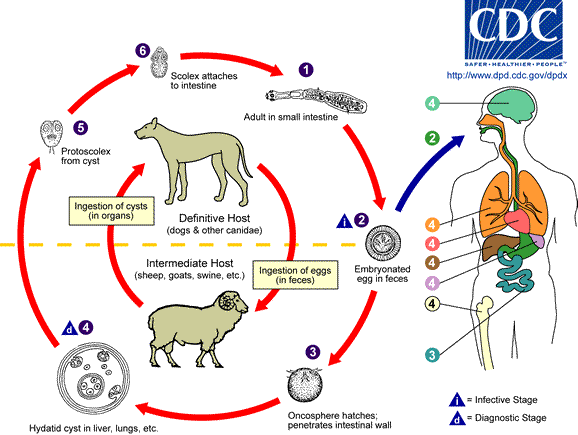
Once infected, one or more hydatid cysts may develop, typically in the liver and lungs. People may be asymptomatic for several years until the cysts grow to a size where signs of disease become apparent. Cysts in the liver can cause abdominal pain, nausea and vomiting, whereas lung cysts can cause chronic cough, chest pain and shortness of breath. Mortality can occur as a result of the cyst rupturing, or other complications.
The definitive hosts of the parasite are carnivores and become infected following ingestion of contaminated meat from intermediate hosts. Here, the tapeworms mature in the carnivores’ intestine and release eggs into the environment to continue the life cycle.
The Peruvian problem
Cystic echinococcosis is a significant public health concern in Peru, with around 3000 new human cases reported every year. 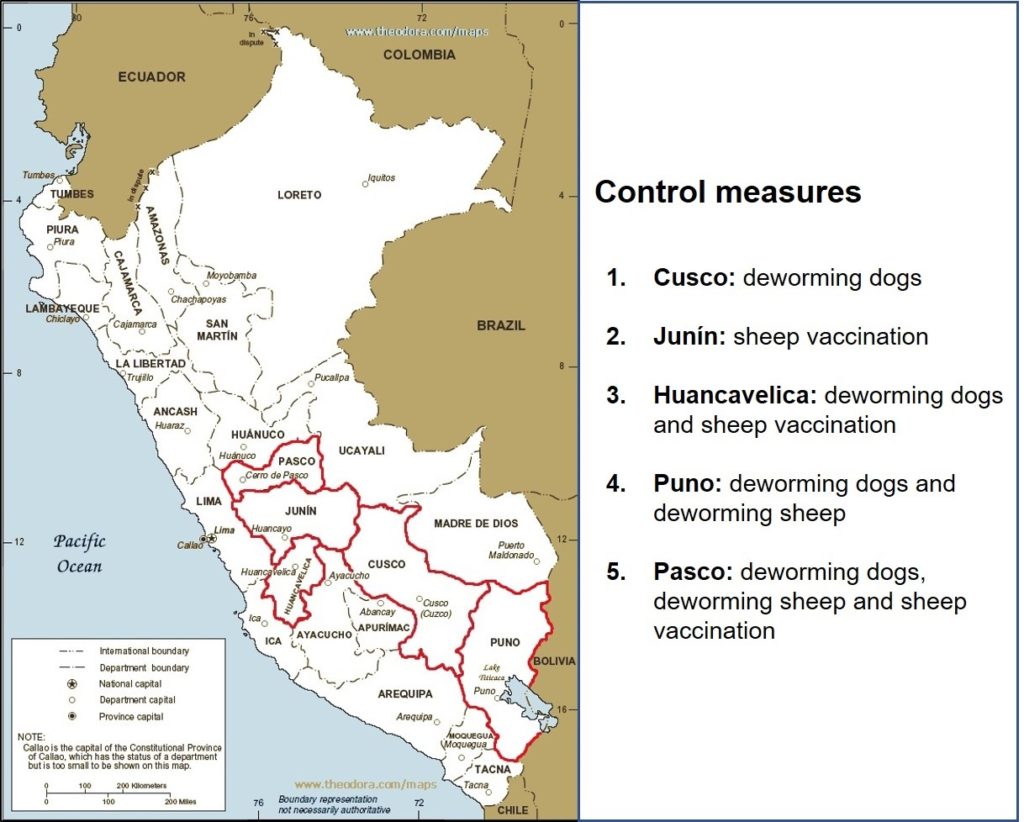 Most occur in poor and rural communities in the Highlands, in sheep-raising areas. In 2013 a Presidential Decree declared CE surveillance and control of national interest, and in response, health authorities initiated 5-year pilot projects to assess the effectiveness of different control measures. The projects, launched in 2015, involve using one or more interventions in selected communities located within five departments of Peru: Cusco, Junín, Huancavelica, Puno and Pasco.
Most occur in poor and rural communities in the Highlands, in sheep-raising areas. In 2013 a Presidential Decree declared CE surveillance and control of national interest, and in response, health authorities initiated 5-year pilot projects to assess the effectiveness of different control measures. The projects, launched in 2015, involve using one or more interventions in selected communities located within five departments of Peru: Cusco, Junín, Huancavelica, Puno and Pasco.
All communities also receive health education, and projects conduct yearly assessment of echinococcosis in people, dogs and sheep.
The workshop
Under the Researcher Links scheme offered within the Newton Fund, the British Council and the Peruvian Council for Science and Technology (CONCYTEC) held a workshop to review and synthesize the evidence on the ongoing control programmes. The workshop was held in Peru’s capital city, Lima, from 16-19 October 2018. It was coordinated by Dr Victor Del Rio (University of Surrey) and Dr Cesar Gavidia (Universidad Nacional Mayor de San Marcos). Early Career Researchers (ECR) from the UK and Peru were invited to contribute to the workshop, and I was fortunate to attend the fast-paced multidisciplinary event.
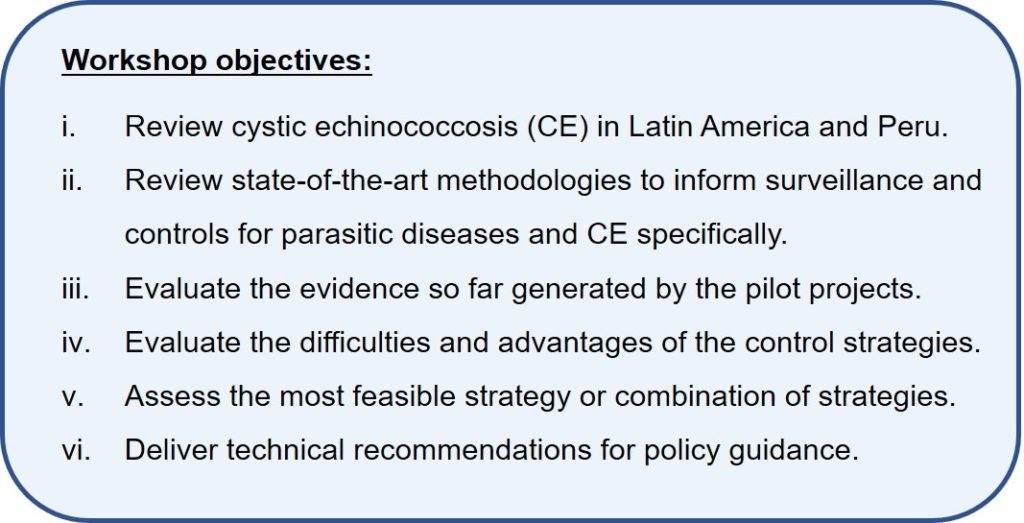
Day 1
After navigating through Lima’s infamous traffic, we arrived at the National Agrarian Health Service (SENASA), where the workshop was held. After an opening by the colourful Dr Gavidia, the day was packed with a diverse array of presentations, covering NTD epidemiology, regional perspectives and experiences from Argentina, and surveillance and CE controls in Peru, from the public and animal health perspective’s. This featured contributions from several organisations (Pan American Health Organization, PAHO; British Council; UK Embassy; Ministry of Health Peru, MINSA; SENASA), and leading researchers such as Professor Maria Gloria Basenez (Imperial College London) and Dr Edmundo Larrieu (Universidad Nacional de Río Negro).
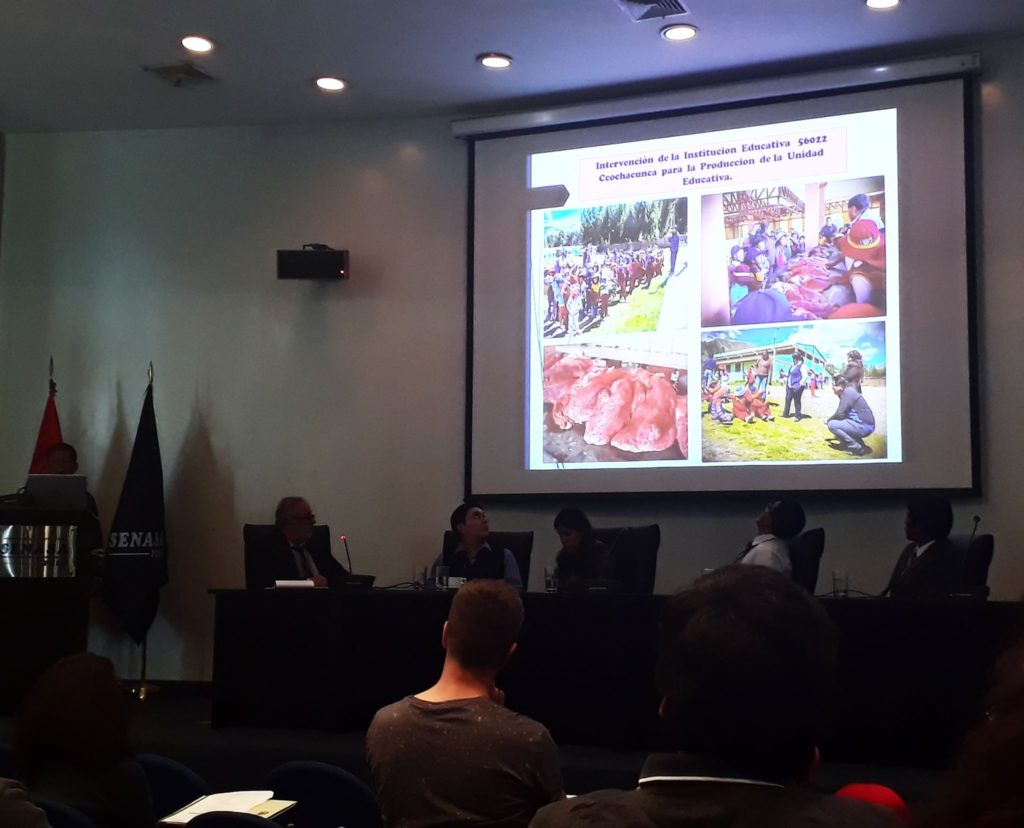
The afternoon’s focus was on ‘perspectives from the field’, where we had an overview of the pilot project design and implementation, and presentations from each of the five different projects. This was a particularly interesting session illuminating the challenges at the local level, such as giving multiple vaccinations to sheep and treatments to dogs, and improving health and hygiene practices.
Day 2
The next day we visited the Centre of Technological, Biomedical and Environmental Research (CITBM), a collaborative and multidisciplinary research centre, where we learned of fascinating ongoing research projects, with an overview of NTD modelling by Professor Basenez and a discussion of collaboration opportunities.
The afternoon saw us brave Lima’s traffic once again to kick off the ECR presentations at SENASA’s offices, which included talks on how modelling, cost analyses and experiences of CE surveillance in Wales could be usefully applied to CE control in Peru.
Day 3
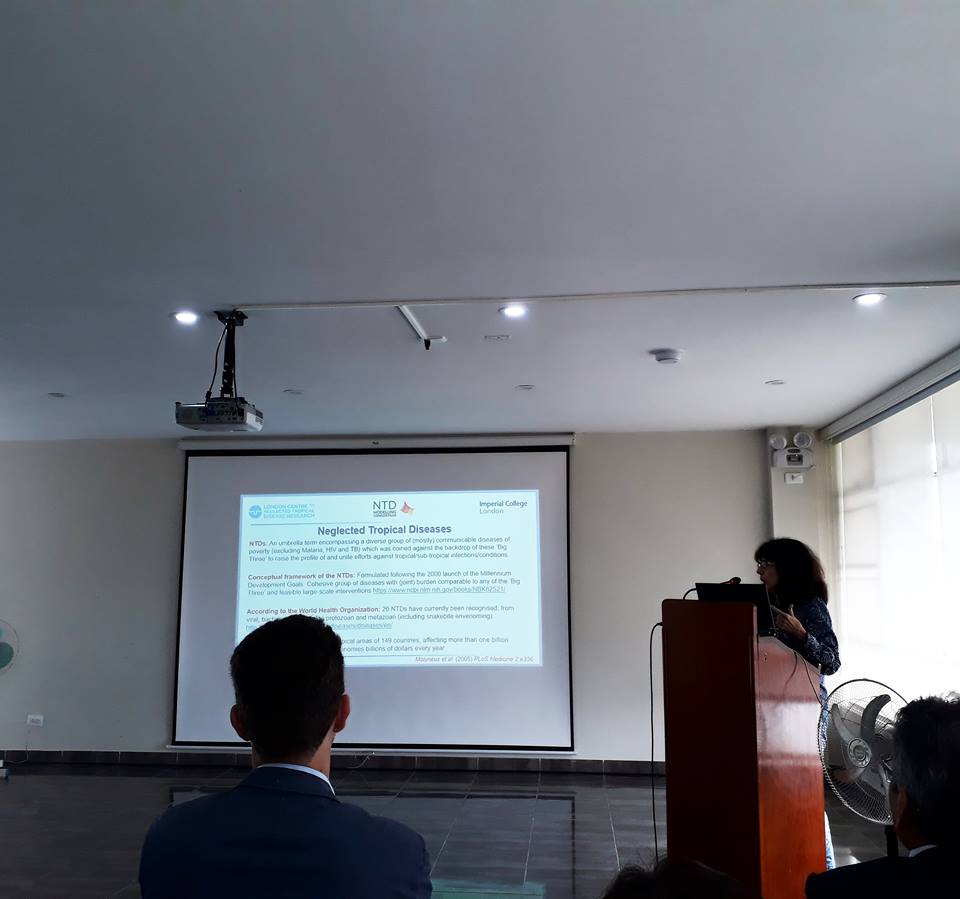
The last sessions of the workshop involved reviewing the evidence from the projects, with lively and bilingual group discussions to consider organizational and methodological improvements required, how best to measure programme impact, and our recommendations for the programme going forward. Examples of suggestions included more frequent monitoring and evaluation to review progress, improving the diagnostic tests available, and standardising diagnostic tests between sites to facilitate comparative data analysis.
Outcomes of the workshop
The workshop provided a unique opportunity for sharing research expertise and networking, with a focus on building up links for future collaborations. It united academia, public health and animal health to highlight the complexities of CE control, as well as the efforts and commitment of those working at the national and local level, and the significant community involvement. The pilot programmes will soon be coming to an end. Evidence on the effectiveness of the interventions, as well as contributions from the workshop, can then be synthesized to inform control programme development and help national policy setting. Outputs of this meeting will include a meeting report and a peer-reviewed paper with the key findings and recommendations generated so far.
Presentations from the meeting will be available on the website.

Comments